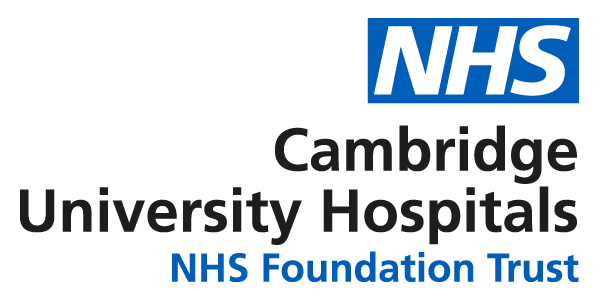There is evidence that long distance travel is a risk factor for the development of thrombosis (blood clots). It is often described as traveller's thrombosis, thought to be caused by prolonged immobility and seat-edge pressure on the back of the legs illustrated in the figure below.
It can occur in association with any form of long-distance travel, by car, bus, rail, ferry or plane. The longer the length of travel the greater the risk of blood clots forming in a deep vein. There are precautions you may consider to minimise your risk of both deep vein thrombosis (DVT) and pulmonary embolism (PE) for continuous journeys lasting more than three hours.

Measures to reduce the risk of thrombosis for all travellers
- Maintain your mobility; do not sit for long periods, particularly with pressure on the back of your thighs. Avoid crossing your legs when sitting and make frequent changes of position, such as taking a walk.
- Avoid sleeping tablets as they may also contribute to longer periods of immobilisation. Regularly flex your ankles to contract your calf muscles.
- Maintain hydration by drinking plenty of water and soft drinks and minimising alcohol and caffeine intakes. Remember that air conditioning, excess heat, diarrhoea and vomiting and inadequate fluid intake can all cause dehydration.
Moderate risk group
You have a moderate risk of developing thrombosis if you have any of the following:
- Have had a DVT /PE in the past
- Have had trauma or surgery with a general anaesthetic lasting more than 30 minutes in the previous two months, but not within the last four weeks
- Are obese (defined as a body mass index above 30kg/m2)
- Have varicose veins
- Are pregnant or in the 6-week post-partum period (after birth)
- Are taking oestrogens, such as oral contraceptives or hormone replacement therapy (HRT)
- Aged over 60 years
- Extremes of height. Taller than 1.9m (6ft 2in) or shorter than1.6m (5ft 3in)
- Have inherited blood clotting abnormalities
- Limited mobility (for example a lower limb fracture)
- Medical illnesses such as active inflammatory bowel disease, severe heart failure or infection
- Polycythaemia
Measures to reduce the risk of thrombosis for travellers in the moderate risk group
- Follow the recommendations above for all travellers.
- Wear well fitted below knee compression hosiery, which are also called travel socks and provide 15-30 mm Hg of pressure at the ankle (check this with your healthcare professional or the product merchant).
High risk group
You have a high risk of developing thrombosis if you have any of the following:
- Have had a surgical procedure under general anaesthetic lasting more than 30 minutes in the last month
- Have active cancer
Measures to reduce the risk of thrombosis for travellers in the high risk group
- Follow the recommendations above for all travellers.
- Wear well fitted below knee compression hosiery, which are also called travel socks and provide 15-30 mm Hg of pressure at the ankle. (check this with your healthcare professional or the product merchant).
- Ask your GP to consider prescribing appropriate anticoagulant medication to help reduce your risk of thrombosis either:
A Low molecular weight heparin (LMWH) subcutaneous injection(such as dalteparin) may be given by self-administration one to two hours prior to the start of the journey.
Or
B Rivaroxaban 10mg tablets orally with food one to two hours prior to the start of the journey. Tablets may be crushed and mixed with 50mL water for patients with swallowing difficulties.
What are the symptoms of a DVT or PE?
- Pain and/or swelling in the leg chest pain worse on breathing in
- Sudden or gradual onset of breathlessness
- Please note that a DVT can occur some days or even weeks (up to eight weeks) after a trip.
If you are concerned you may have a blood clot, it is very important that you seek urgent medical attention.
Any person who has recently had a DVT/PE diagnosed and is taking anticoagulant therapy should seek advice from their doctor if taking long distance travel within four weeks of diagnosis.
Remember
The risk of developing travel related DVT or PE is small. You can benefit from following suggestions on how to minimise your risk.
Anyone who develops pain or swelling in their legs, chest pain and/or shortness of breath after a long journey should seek medical advice.
Aspirin has not been shown to be effective in reducing the risk of traveller's thrombosis.
There is no evidence demonstrating supporting an association between dehydration and travel associated thrombosis.
Any person taking oral anticoagulation is already taking pharmacological precaution against the development of thrombosis.
References
Watson, G and Baglin T (2010) Guidelines on travel-related venous thrombosis. British Journal of Haematology, 152, 31-34.
Our aim is to care for you safely and effectively.
We are smoke-free
Smoking is not allowed anywhere on the hospital campus. For advice and support in quitting, contact your GP or the free NHS stop smoking helpline on 0800 169 0 169.
Other formats
Help accessing this information in other formats is available. To find out more about the services we provide, please visit our patient information help page (see link below) or telephone 01223 256998. www.cuh.nhs.uk/contact-us/accessible-information/
Contact us
Cambridge University Hospitals
NHS Foundation Trust
Hills Road, Cambridge
CB2 0QQ
Telephone +44 (0)1223 245151
https://www.cuh.nhs.uk/contact-us/contact-enquiries/

